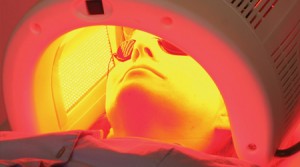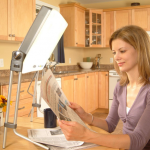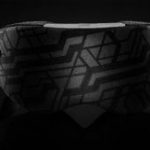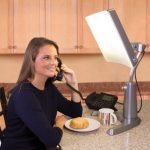
A great majority of people struggle with conditions that make getting through your days not so smooth and peaceful. Season Affective Disorder, work fatigue, seasonal changes, and jet lag are just a few examples. Most people don’t do anything about these conditions. They sleep a little longer on the weekend, hope it will just go away, drink too many energy drinks, and the cycle continues. Using a form of light therapy such as a light box can help ease some of the tension from these issues. Light boxes block the release of melatonin, which is a sleep hormone. You may have used the all natural pills to help you fall asleep. When less melatonin is being triggered in your brain, your energy levels and alertness can increase.
Sleep disorders are very common among Americans. Maybe it’s because we are so connected to our devices that we can’t rest from them, or maybe because we’re so easily tensed and stressed. Or depending on your location, maybe daylight savings is throwing you for a loop. Using a light box on a regular schedule or just in times of need can easily improve your quality of life. Did you wake up too late and not get enough sunlight throughout your day? Keep a light box by you for your evening. Recharge those internal batteries. Is it basically impossible for you to wake up to the sound of your alarm when the sun isn’t even awake yet? Or does that boisterous alarm sound just make you go mad? Wake up to vibrant LED light shining from your bedside table instead. Is daylight savings confusing the heck out of your mind and body? Is it virtually impossible to know what time it is without a watch? Get yourself back on track with a light box. Wake yourself up with a light box and keep it on until it is a normal time for the sun to retreat.
All of these conditions require LED lighting. LED lighting works by mimicking the natural sunshine that occurs outdoors. In the past, white light LED lighting was the only form used to treat Seasonal Affective Disorder, which was discussed above. But in recent research, we have come to learn that blue light therapy is an effective method as well. SAD.org.uk, a website based in the UK, is dedicated to helping treat Seasonal Affective Disorder. In their section on choosing the right light products, they discussed why blue light is becoming more prevalent in the practice.
“Although the light emitted by the sun appears to be white, it is actually made up of the full spectrum of colours. This becomes apparent when sunlight shines through rain and it is split into the full spectrum of colours creating a rainbow.” (SAD.org.uk)
Thus explaining why experimenting with other forms of light should not be out of the question. Blue light therapy has indeed been proven just as effective as white light while treating SAD.
No, the LED light boxes are not warm. And no, they won’t give you a tan. But they sure will trick your mind. And guess what? Tricking yourself isn’t always a bad thing.
Making Time For It…
The process of using a light therapy box depends on what you’re using it for it. If you are suffering from Seasonal Affective Disorder, work fatigue, seasonal changes, jet lag, decreased mood levels, or anything else that has got your internal happiness radar down, a light box set up on a table in front of you is what you need. The recommended process for the treatment involves sitting in front of a light box, which typically consists of fluorescent bulbs and a diffusing screen. Looking into the lights is far from recommended, but rather finding something to pass the time, something you enjoy to do, will be the most effective. For example, reading a book, eating some meals, knitting, writing, etc. It is important to make sure that your body and face are facing the light, but you are staying focused on your activity, rather than thinking too deeply about the treatment occurring.
The therapy can last as long as you see fit. Some people just need fifteen minutes a day, while others need three hours. Some people need to use the process just once a day, while others use it much more frequently. Discussing your options with a doctor if you’re dealing with severe conditions may be a smart decision.
In a research clinic at Columbia University, students attempted to treat winter symptoms with light therapy. In their article written about the clinic they explained,
“The average length of a session for a system delivering 10,000 lux illumination is, for example, much shorter than for 2,500 lux (30 minutes vs. two hours). In clinical trials at our institute, with over 100 SAD patients who used a 10,000 lux system with UV-filtered light diffusion and angular tilt, for 30 minutes each day, about 3/4 showed major improvement of depressive symptoms. In another experiment, we found that 30 minutes was an unnecessarily long exposure for some patients (who responded fully at 15 minutes), while several required 1-hour exposures to show the effect.” (Columbia.edu)
If you have decided to experiment with light therapy and you are struggling with some of the other conditions discussed above, such as having trouble waking up or having trouble getting to sleep, a different method may be what you are looking for. Using a light therapy box that is set to a timer, could be a simple and effective option for you. Simply set the lamp close to where you sleep in your bedroom and set your preferred wake up time. The lamp will slowly increase it’s strength of light, awaking you in a peaceful way and keeping your mind on track with day cycle.







